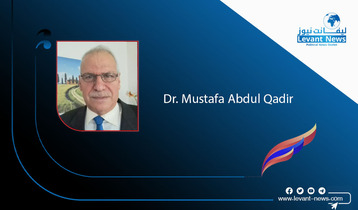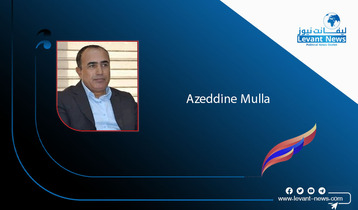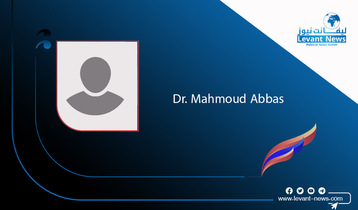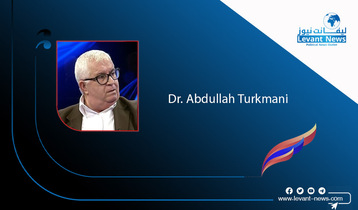-
Biden’s symbolic visit to Europe

President Joe Biden’s visit to Poland last week was both well-timed and symbolic. Well-timed because Poland had welcomed over 2 million refugees who had fled Ukraine after Vladimir Putin invaded his neighbour on February 24; symbolic because Biden represents the United States, the most powerful member of Nato, the Atlantic alliance set up at the start of the Cold War in 1949.
Air Force One landed on an airfield close to Poland’s border with Ukraine and Biden met officials from both countries and American soldiers and Ukrainians fleeing their homes. The US president had previously attended Nato, EU and G7 emergency summits in Brussels, all emphasizing the significance of transatlantic ties. “The single most important thing we had to do in the west is to be united,” he declared.
On Saturday in Warsaw he generated global headlines and frenzied posts on social media, by predicting that Putin “cannot remain in power” and described him as a “butcher.” An American official clarified shortly afterwards that the president was not calling for “regime change”. The Kremlin responded swiftly to say that it was a matter for the Russian people to choose their president.
The head of the Council for Foreign Relations, an elite Washington thinktank and veteran US diplomat, Richard Haas, criticized Biden on Twitter for having “made a difficult situation more difficult and a dangerous situation more dangerous.”
It was not the first time that POTUS spoke off the cuff without having considered the implications. On Thursday in Brussels he said Nato “would respond" if Russia used chemical weapons in Ukraine. But he did not spell out what that might mean. Asked whether the use of chemical weapons by Putin would prompt a military response from Nato, Biden replied that it "would trigger a response in kind".
Boris Johnson, the British prime minister, said it would be “catastrophic” if Putin used chemical weapons, while Nato
Secretary-General Jens Stoltenberg made clear it would result in severe consequences. The White House has set up a national security team to look at how the US and allies should react if Russia launched a chemical attack. But there is no suggestion Nato would respond by using chemical weapons as they are illegal under international law.
The key issue for Nato is to avoid imposing a no-fly-zone above Ukraine as demanded repeatedly by the country’s impressively articulate and media-savvy president, Volodomyr Zelenskiy, as that would risk aircraft from the Atlantic alliance being targeted by the Russian airforce, or vice versa, which would lead to a serious escalation.
“We repeat every day: Close the sky over Ukraine. Close for all Russian missiles, for Russian combat aircraft, for all their terrorists,” Zelenskiy said shortly after Putin launched his “special military operation”. Experts say setting up a NFZ would require destroying Russian air defences that could reach Nato aircraft in Ukraine and threatening to shoot down Russian planes over the country. “It would be a pretty dramatic escalation by Nato” one said.
In the last few days Nato has been grappling with the question of whether the Kremlin has indeed changed its strategic goals in Ukraine to focus on consolidating control of the eastern Donbas region, where Moscow claims Russian-backed separatists are controlling 93% of Luhansk and 54% of Donetsk.
"The main objectives of the first stage of the operation have generally been accomplished," said Sergei Rudskoi, head of the Russian General Staff's Main Operational Directorate. "The combat potential of the armed forces of Ukraine has been considerably reduced, which makes it possible to focus our core efforts on achieving the main goal - the liberation of Donbas."
Russia has previously pointed to far bigger ambitions – including the overthrow of what it calls the “neo-Nazi” Zelenskiy government and its replacement by a pro-Russian one. But stiff resistance from Ukraine forces, logistical problems and low morale may have made that unachievable.
Some analysts think that Putin has downgraded his aspirations with regard to Kyiv to convince the Russian people, while others assume that the public position is a smokescreen – or simply an outright lie – to deceive the Ukrainians and their allies. If the first scenario were true that might lead to permanent Russian control of Eastern Ukraine, echoing the split between North and South Korea.
But as the US-based Institute for the Study of War said in its latest assessment, “the increasingly static nature of fighting around Kyiv reflects the incapacity of Russian forces rather than any shift in Russian objectives of efforts at this time”.
The first month of Russia’s invasion was executed on Putin’s assumption that Ukraine is a false entity that would collapse quickly.
The Kremlin believed that Kyiv would fall, the Ukrainian army lay down its arms and millions of citizens greet their Russian “liberators”. None of those assumptions happened and Ukraine’s soldiers and citizens do not look at this point even close to breaking.
Only one thing is certain for now: this unprecedented and alarming crisis is far from over.

BY: IAN BLACK
You May Also Like
Popular Posts
Caricature
BENEFIT Sponsors BuildHer...
- April 23, 2025
BENEFIT, the Kingdom’s innovator and leading company in Fintech and electronic financial transactions service, has sponsored the BuildHer CityHack 2025 Hackathon, a two-day event spearheaded by the College of Engineering and Technology at the Royal University for Women (RUW).
Aimed at secondary school students, the event brought together a distinguished group of academic professionals and technology experts to mentor and inspire young participants.
More than 100 high school students from across the Kingdom of Bahrain took part in the hackathon, which featured an intensive programme of training workshops and hands-on sessions. These activities were tailored to enhance participants’ critical thinking, collaborative problem-solving, and team-building capabilities, while also encouraging the development of practical and sustainable solutions to contemporary challenges using modern technological tools.
BENEFIT’s Chief Executive Mr. Abdulwahed AlJanahi, commented: “Our support for this educational hackathon reflects our long-term strategic vision to nurture the talents of emerging national youth and empower the next generation of accomplished female leaders in technology. By fostering creativity and innovation, we aim to contribute meaningfully to Bahrain’s comprehensive development goals and align with the aspirations outlined in the Kingdom’s Vision 2030—an ambition in which BENEFIT plays a central role.”
Professor Riyadh Yousif Hamzah, President of the Royal University for Women, commented: “This initiative reflects our commitment to advancing women in STEM fields. We're cultivating a generation of creative, solution-driven female leaders who will drive national development. Our partnership with BENEFIT exemplifies the powerful synergy between academia and private sector in supporting educational innovation.”
Hanan Abdulla Hasan, Senior Manager, PR & Communication at BENEFIT, said: “We are honoured to collaborate with RUW in supporting this remarkable technology-focused event. It highlights our commitment to social responsibility, and our ongoing efforts to enhance the digital and innovation capabilities of young Bahraini women and foster their ability to harness technological tools in the service of a smarter, more sustainable future.”
For his part, Dr. Humam ElAgha, Acting Dean of the College of Engineering and Technology at the University, said: “BuildHer CityHack 2025 embodies our hands-on approach to education. By tackling real-world problems through creative thinking and sustainable solutions, we're preparing women to thrive in the knowledge economy – a cornerstone of the University's vision.”
opinion
Report
ads
Newsletter
Subscribe to our mailing list to get the new updates!






















